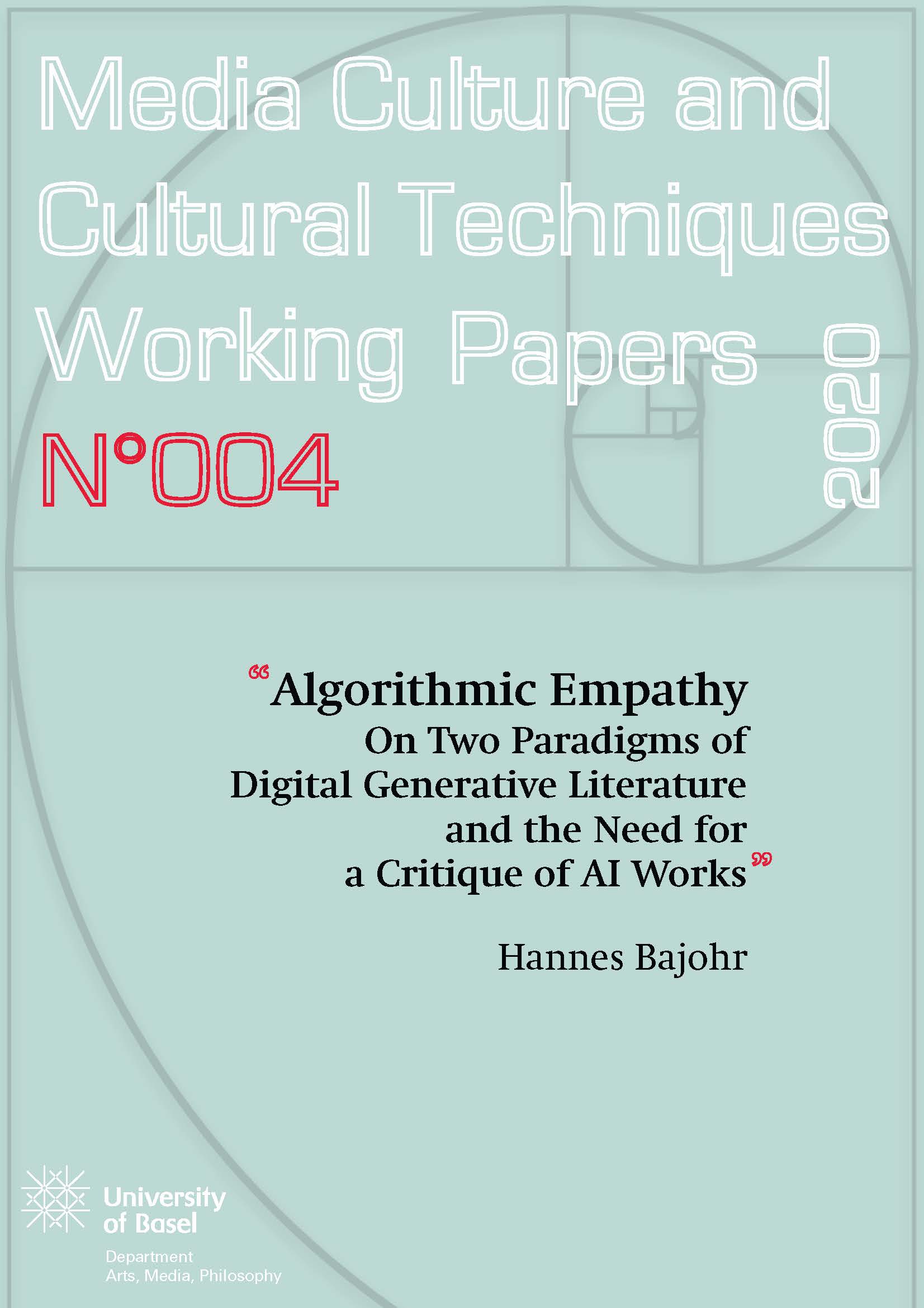Nr. 004 (2020): Hannes Bajohr: Algorithmic Empathy. On Two Paradigms of Digital Generative Literature and the Need for a Critique of AI Works
Forgoing the talk about conscious machines as well as a specifcally human creative urge, I instead want to look at the way these works work, and which structures they implement. I will focus particularly on digital literature, where machine learning presents us with a new paradigm of textual production. It stands in contrast to traditional, long-established algorithmic literature. Te new type I want to provisionally call the connectionist, the old type the sequential paradigm. While the rule-based sequential paradigm of digital literature can look back on a rich critical apparatus, the “non-transparent” connectionist paradigm is still under-theorized. In what follows, I would like to offer some refections on the differences between both paradigms, and hint at what we should keep in mind while developing a critique of AI aesthetics.

